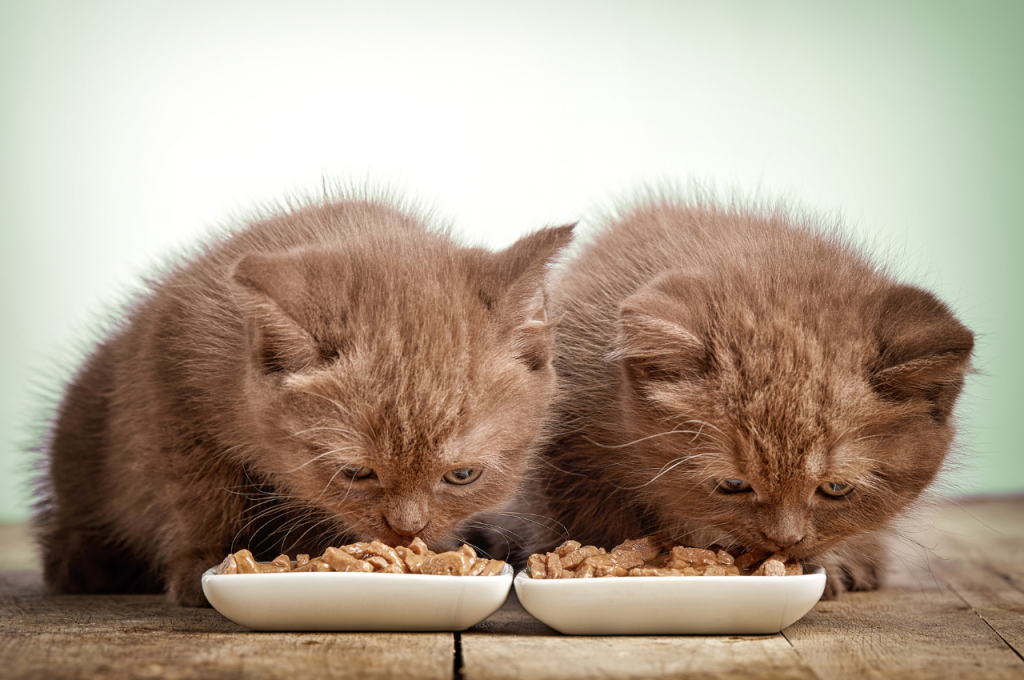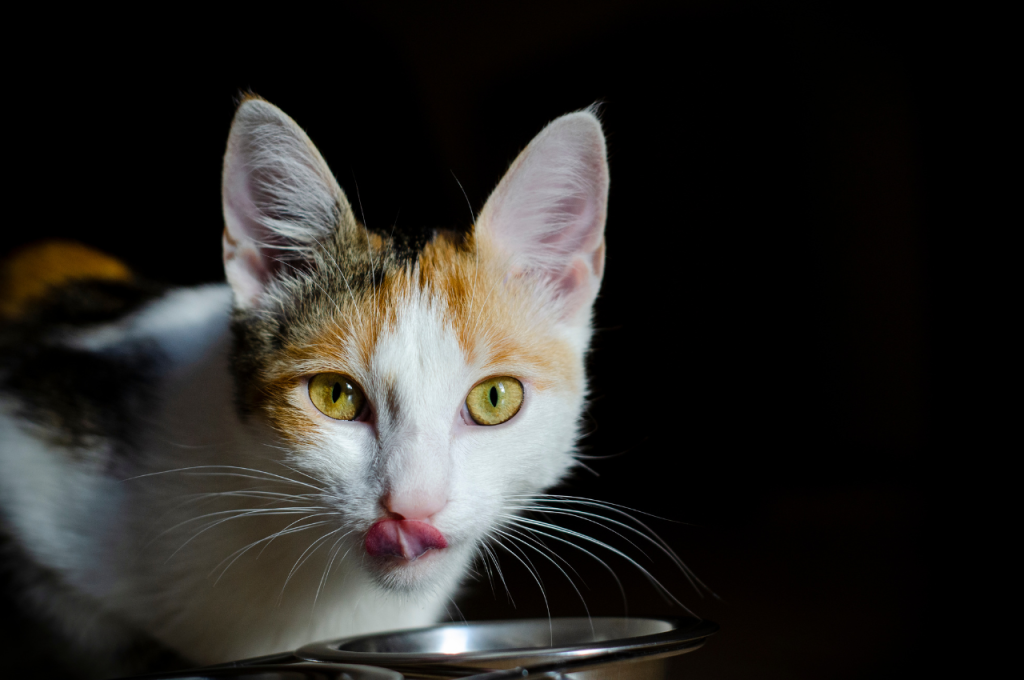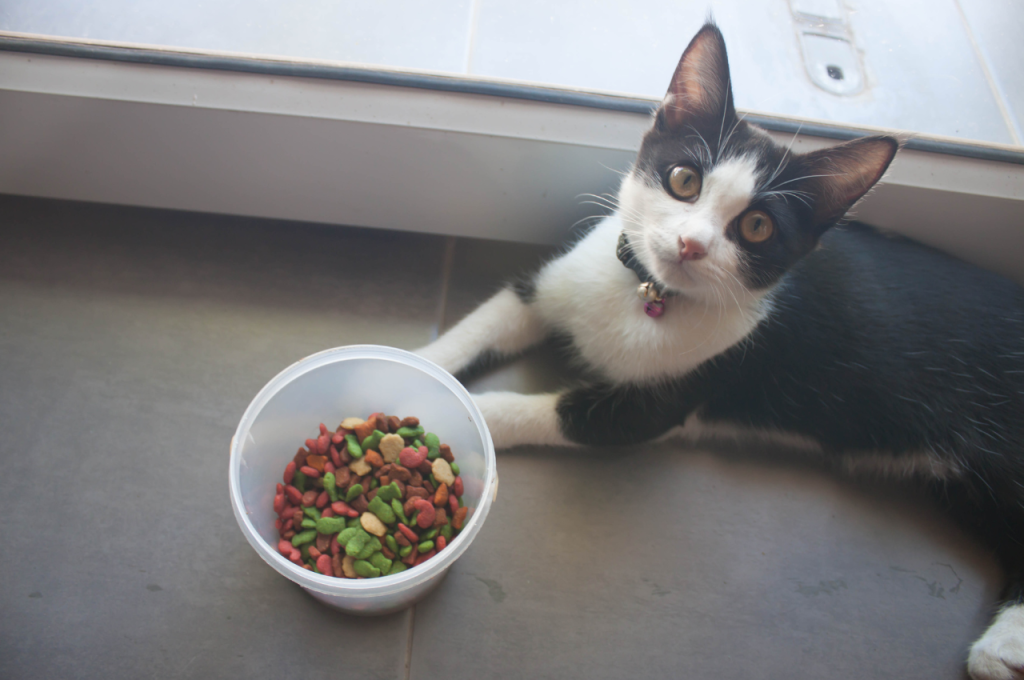Cats eat a diet primarily consisting of meat, such as poultry, fish, and beef. A balanced commercial cat food can provide all the necessary nutrients for feline health.
Cats are obligate carnivores, meaning they require a diet high in animal protein for optimal health. Additionally, they need essential nutrients like taurine and arachidonic acid, which are found in animal-based foods. It is important to feed your cat a balanced diet to ensure they receive all the essential nutrients they need.
While cats can enjoy occasional fruits and vegetables as treats, the main focus should always be on high-quality protein sources. Be mindful of any dietary restrictions your cat may have and consult with a veterinarian for personalized nutrition advice.
Essential Nutrients for Cats
Proper nutrition is essential for the health and well-being of our feline companions. Cats have unique dietary requirements that must be met to ensure they receive all the essential nutrients necessary for optimal health.

Protein
Cats require high levels of protein in their diet for muscle maintenance and energy. Quality sources like meat and fish ensure they get essential amino acids.
Fats
Fats provide cats with energy and aid in the absorption of fat-soluble vitamins. Omega-3 and Omega-6 fatty acids are vital for a cat’s skin and coat health.
Carbohydrates
While not essential, carbohydrates can be part of a cat’s diet in small amounts. Fiber from grains and vegetables can aid in digestion and bowel health. Excessive carbs should be avoided as cats are obligate carnivores.
Vitamins and Minerals
Cats need a balanced range of vitamins and minerals to support overall health.
| Vitamins | Minerals |
| Vitamin A | Calcium |
| Vitamin D | Phosphorus |
| Vitamin E | Potassium |
Top 10 Power Meals for Cats
Cats are obligate carnivores, which means they require a high amount of meat in their diet to thrive. Providing your feline friend with the right nutrients is crucial for their overall health and well-being. Here are the top 10 power meals for cats that can contribute to their balanced diet and ensure they get the essential nutrients they need.
1. Raw Meat
Raw meat is an excellent source of protein for cats. It provides essential amino acids that support your cat’s muscle development and overall health. Be sure to source high-quality, fresh meat and consult your veterinarian regarding appropriate portions and varieties.
2. Fish
Fish is another protein-rich option for cats. It contains omega-3 fatty acids, which promote a healthy coat and skin. However, it’s important to note that fish should be fed in moderation as a primary diet high in fish can lead to thiamine deficiency in cats.
3. Cooked Eggs
Cooked eggs are a great source of protein and can be beneficial for your cat’s diet. Make sure the eggs are thoroughly cooked to avoid any risk of salmonella. Limiting the consumption of eggs is recommended to prevent nutrient imbalances.
4. Fruits
Fruits can be a valuable addition to a cat’s diet, providing essential vitamins and minerals. However, not all fruits are suitable for cats, so it’s important to research which fruits are safe and serve them in moderation.
5. Vegetables
While cats are primarily carnivores, some vegetables can still offer nutritional benefits. Incorporating small amounts of vegetables such as steamed carrots or green beans can provide additional fiber and nutrients.
6. Dairy Products
Dairy products like cheese and yogurt can be given to cats in small amounts. However, not all cats can tolerate lactose, so it’s crucial to monitor for any signs of digestive upset and limit the intake accordingly.
7. Cooked Grains
Cooked grains such as rice or oatmeal can serve as a source of carbohydrates for cats. These can be beneficial for cats with sensitive stomachs or as a change of pace, but should not be a primary part of their diet.
8. Cat Food with Essential Supplements
High-quality commercial cat food that includes essential supplements like taurine, omega-3 fatty acids, and vitamins can provide a well-balanced diet for cats. Look for products with quality ingredients and the necessary nutrients for your cat’s specific needs.
9. Homemade Cat Food
Homemade cat food offers the benefit of controlling the ingredients and ensuring the quality of the food your cat consumes. Consult with a veterinary nutritionist to develop a properly balanced homemade cat food recipe tailored to your cat’s requirements.
10. Water
Water is essential for a cat’s overall health. Ensure your cat has access to fresh, clean water at all times to prevent dehydration and support proper organ function.
Foods to Avoid
Cats should not eat foods such as onions, garlic, chocolate, and caffeine, as these can be toxic to them. Additionally, dairy products, raw meat, bones, and fatty foods should be avoided as they can pose health risks to cats. It’s important to provide a balanced, cat-specific diet to ensure their well-being.

Toxic Foods for Cats
It’s important to know what foods to avoid feeding your feline friend to keep them healthy and safe. Some foods that are perfectly fine for humans can be toxic to cats and cause severe health issues. Here are some examples of foods you should never give to your cat:
- Chocolate and caffeine-containing products: These can cause heart palpitations, rapid breathing, and even seizures in cats.
- Onions and garlic: These can damage a cat’s red blood cells, leading to anemia.
- Grapes and raisins: These can cause kidney failure in cats.
- Alcohol: Even small amounts can be extremely dangerous for cats, leading to coma or death.
- Raw meat, fish, and eggs: These may contain harmful bacteria or parasites that can cause digestive problems or infections.
- Dairy products: While cats are known for their love of milk, most adult cats are lactose intolerant and can’t properly digest dairy products.
- Xylitol: This artificial sweetener, commonly found in gum, candy, and baked goods, can cause insulin release in cats, leading to a rapid drop in blood sugar levels and potentially liver failure.
Common Allergens for Cats
Cats, like humans, can develop allergies to certain foods. These allergies occur when a cat’s immune system mistakenly sees a particular food as harmful and launches an immune response. Here are some common allergens for cats:
- Grain-based products: Wheat, corn, and soy are common ingredients in many cat foods. Some cats may develop allergies to these grains, leading to digestive issues or skin problems.
- Seafood: Fish, shrimp, and other types of seafood can cause allergies in cats. Symptoms may include vomiting, diarrhea, and itchy skin.
- Chicken: Although chicken is a common protein source in cat food, some cats may have an allergic reaction to it, resulting in gastrointestinal upset or skin irritation.
- Dairy products: As mentioned earlier, most adult cats are lactose intolerant and can experience digestive problems or skin issues if they consume dairy products.
If you notice any unusual symptoms or suspect that your cat may have food allergies, it’s best to consult with a veterinarian. They can help determine the cause of the allergy and provide appropriate dietary guidance for your cat’s specific needs.
Meal Planning and Portion Control
When it comes to feeding your feline friend, meal planning and portion control are essential for maintaining their health and well-being. Cats have specific dietary needs, and ensuring they receive a balanced diet in the right proportions is crucial to their overall nutrition. In this section, we will cover the key elements of meal planning and portion control for cats, including balanced diet ratios, frequency of feeding, and managing portion sizes.
Balanced Diet Ratios
A balanced diet is essential to provide cats with the necessary nutrients they need to thrive. This includes a combination of proteins, carbohydrates, and fats. In general, a healthy feline diet should consist of:
- Proteins: High-quality animal-based proteins should make up the majority of your cat’s diet. These can be sourced from lean meats like chicken, turkey, or fish.
- Carbohydrates: Cats have a limited need for carbohydrates, but small amounts can be included in their diet. Opt for complex carbohydrates like whole grains.
- Fats: Fats are a vital energy source for cats and should make up a small portion of their diet. Choose healthy fats like fish oil or poultry fat.
It’s important to note that cats are obligate carnivores, meaning their bodies are designed to primarily thrive on animal protein. Therefore, it’s crucial to prioritize protein sources in their diet.
Frequency of Feeding
The frequency of feeding your cat depends on their age, activity level, and overall health. In general, it’s recommended to divide their daily food intake into multiple small meals throughout the day. This helps to mimic their natural hunting behavior and prevents overeating. A typical feeding frequency can be:
- Kittens (up to 6 months): Feed them about 3-4 times a day since they have higher energy needs and smaller stomachs.
- Adult cats: Provide them with 2-3 meals per day to maintain a healthy balance.
- Senior cats: As cats age, their metabolism slows down, so it’s best to offer them frequent small meals to aid digestion.
Remember to adjust the portions based on your cat’s individual needs and consult with a veterinarian if you have any concerns regarding their feeding schedule.
Managing Portion Sizes
In addition to determining the frequency of meals, it’s crucial to manage portion sizes to prevent overfeeding or underfeeding. The amount of food your cat needs depends on factors such as their age, weight, and activity level. Here are some general guidelines to help you manage portion sizes:
- Read the packaging: Follow the feeding guidelines provided on the cat food packaging as a starting point, but remember that these are just general recommendations.
- Observe your cat: Pay attention to your cat’s body condition and adjust the portion sizes accordingly. If your cat is gaining weight, consider reducing the portion sizes, and vice versa.
- Weigh the food: Use a kitchen scale to measure the exact amount of food you are feeding your cat. This ensures consistency and avoids guesswork.
Remember that every cat is unique, and their dietary needs may vary. Regular monitoring of their weight, body condition, and overall health is essential to determine the appropriate portion sizes for your feline companion.
Special Dietary Needs for Cats
While cats are known for their independent nature, they have unique dietary requirements that must be met to ensure their health and well-being. Some cats may have special dietary needs due to medical conditions, age, or lifestyle factors.
Senior Cats
Senior cats may have specific dietary requirements due to age-related conditions such as decreased kidney function or arthritis. Increasing protein and fiber while reducing caloric intake can support their overall health.
Kittens
Kittens require a diet rich in protein, essential fatty acids, and vitamins to support their rapid growth and development. Providing a balanced nutrient-dense diet is crucial for their well-being.
Overweight Cats
Overweight cats benefit from a weight management diet that is low in calories but high in fiber to help them feel full and satisfied. Controlled portions and increased physical activity are also crucial for their weight loss.
Cats with Health Conditions
Cats with health conditions such as diabetes or urinary issues may require specialized diets tailored to their specific needs. Diets low in carbohydrates or high in moisture can help manage their conditions effectively.
Transitioning to A New Diet
Transitioning to a new diet for your cat can be a crucial process that requires care and attention. Cats may be sensitive to sudden changes in their food, so it’s essential to take the right steps to ensure a smooth transition.

Tips for Smooth Transition
- Gradually mix the new food with the old one over 7-10 days.
- Observe your cat’s reaction and adjust the ratio accordingly.
- Provide ample fresh water during the transition.
Monitoring Health Changes
- Keep an eye on your cat’s bowel movements.
- Monitor for signs of vomiting or diarrhea.
- Look for changes in energy levels and coat condition.
Frequently Asked Questions for What Foods Cats Eat?
Certainly! Here’s a FAQ section for your blog article:
What are the best foods for a healthy cat diet?
Cats thrive on a balanced diet that includes high-quality protein, essential fatty acids, vitamins, and minerals. A mix of wet and dry food can provide the necessary nutrients and hydration. Consulting with a veterinarian to determine the best diet for your cat’s specific needs is essential.
Can cats eat human foods like fish and eggs?
Yes, cats can safely consume certain human foods like fish and eggs, as long as they are prepared properly and offered in moderation. However, it’s important to avoid feeding cats foods that are toxic to them, such as chocolate, grapes, and onions.
How should I transition my cat to a new food?
Transitioning a cat to a new food should be done gradually over 7-10 days to avoid digestive upset. Start by mixing a small amount of the new food with the old food, then gradually increase the ratio of new to old food each day until the transition is complete.
Conclusion
Cats have specific dietary needs that rely on high-quality protein sources. It’s important to provide a balanced, species-appropriate diet for optimal health and well-being. Offering a variety of foods and consulting with a veterinarian is crucial for ensuring your feline friend’s nutritional requirements are met.
Understanding what foods cats eat is key to keeping them happy and healthy.
